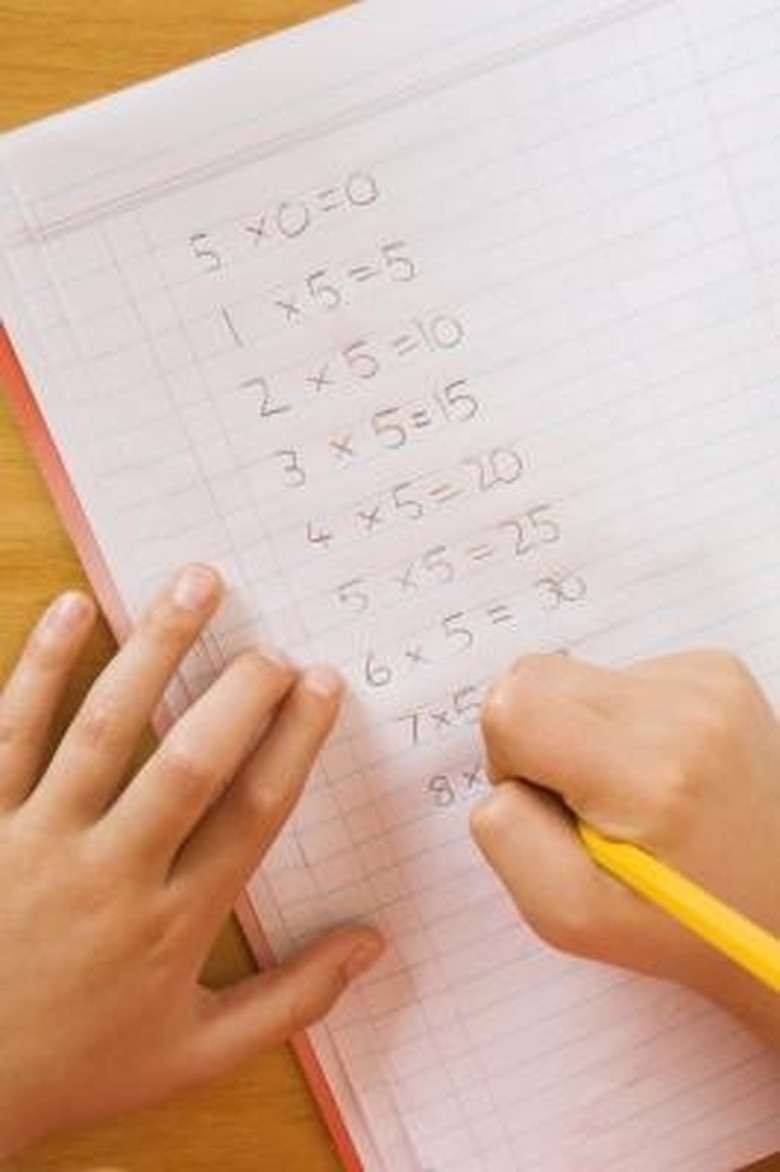A List Of Basic Math Facts
If you are a student, you probably don't give much thought to math except when you're working problems. You may also not know or have forgotten that the numbers in math problems have names. In that case, consider this article as a very simplified basic math facts refresher course.
Functions
Functions
There are four basic functions in math. They are addition, subtraction, multiplication and division. Addition and multiplication give you larger answers; subtraction and division give you smaller answers.
Addition
Addition
The numbers used in addition are called addends; the answer is called the sum. In addition, you write the numbers under one another, with the ones aligned in a column, then the tens, then the hundreds, and so on. Draw a line under the columns of numbers.
You add the numbers in the right column first. If the sum of that column is nine or below, you write that sum under the line.
If it is above nine, you only write the ones of that sum under the line. In other words, if the sum of the right column is eleven, you write down the number one and regroup or carry over the tens digit, in this case also the number one, into the next column.
You continue adding each column, regrouping or carrying over if necessary, until you have added all the numbers and reached a total sum.
Subtraction
Subtraction
The top, or higher, number in subtraction is called the minuend, the lower number is the subtrahend and the answer is the difference. When you subtract, you are looking for the number that you must add to the smaller number.
The smaller number is written under the larger, again with the proper units aligned, tens under tens, hundreds under hundreds and so on, and a line is drawn. Starting on the right again, with the ones, you subtract each bottom digit from the digit with which it corresponds on top. Sometimes it is necessary to borrow or regroup numbers if your bottom digit is greater than the top digit.
Multiplication
Multiplication
The top number in a multiplication problem is called the multiplicand, the bottom number is the multiplier, and the answer is called the product.
When writing a multiplication problem that has more than two digits, the multiplier is written under the multiplicand and a line is drawn. You multiply the multiplicand by each of the multiplier's digits. You will get partial products as you multiply, the ones digit of which you will write in the same column as the digit being multiplied. Then all partial products are added to achieve the product.
Division
Division
In division, you work with a dividend and a divisor to find a quotient. In short division, you are determining the number of times the divisor will equal the dividend. Here is one way to do it, using this problem:
Divide 7 into 242.
Starting at the left of the dividend, take as many digits as you need to form a number that will contain the divisor at least once but no more than ten times. In this case, 7 goes into 24 three times. You write that digit over the last digit of your partial dividend.
Now, you know that 7 times 3 is 21, so you write the number 21 under the number 24, and subtract 21 from 24. That leaves you with 3, which you write under the two numbers you just subtracted. Now, bring down your 2 and write it next to the 3. Divide 7 into that number–32. Seven times 4 is 28, so write the 4 next to the three that you got when you divided 7 into 21. Subtract 28 from 32. This leaves with you with 4, which cannot be divided by 7, so that is your remainder.
References
Cite This Article
MLA
Elizabeth, Jessica Anne. "A List Of Basic Math Facts" sciencing.com, https://www.sciencing.com/list-basic-math-5377865/. 24 April 2017.
APA
Elizabeth, Jessica Anne. (2017, April 24). A List Of Basic Math Facts. sciencing.com. Retrieved from https://www.sciencing.com/list-basic-math-5377865/
Chicago
Elizabeth, Jessica Anne. A List Of Basic Math Facts last modified August 30, 2022. https://www.sciencing.com/list-basic-math-5377865/
